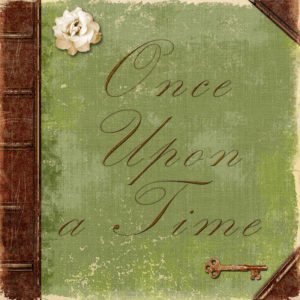 Last August, Hope took off from Southampton Island and set a course southeast. Southampton had merely been a way station for her. Weeks earlier she had arrived there from the Mackenzie River, over 1,500 miles away. In Southampton, she gathered fuel and supplies for the incredible journey ahead. After days of travel, she found herself out in the open ocean somewhere south of Newfoundland. And it was here that she ran into trouble, caught up in the ferocious winds of Tropical Storm Gert. Fighting ferocious headwinds, she plowed ahead at a painful crawl. But, she never gave up. Finally she broke through to the storm’s far side. Now, with the gale at last at her back, she rocketed to her destination – her first rest since she’d taken off from Southampton Island four days and 2,325 miles earlier…
Last August, Hope took off from Southampton Island and set a course southeast. Southampton had merely been a way station for her. Weeks earlier she had arrived there from the Mackenzie River, over 1,500 miles away. In Southampton, she gathered fuel and supplies for the incredible journey ahead. After days of travel, she found herself out in the open ocean somewhere south of Newfoundland. And it was here that she ran into trouble, caught up in the ferocious winds of Tropical Storm Gert. Fighting ferocious headwinds, she plowed ahead at a painful crawl. But, she never gave up. Finally she broke through to the storm’s far side. Now, with the gale at last at her back, she rocketed to her destination – her first rest since she’d taken off from Southampton Island four days and 2,325 miles earlier…
Do you want to know more about Hope? Are you rooting for her to reach her destination?
What if I told you the same information in this format?
Hope’s Journey
- 7 days of travel
- 3,825 miles
- range of speed: 9 miles per hour to 92 miles per hour
Does the second approach to the information motivate you to want to learn more about Hope’s journey?
I hope this example illustrates the power of storytelling – which is the topic of much recent buzz in marketing circles. Andy Goodman, the keynote speaker for the 2013 Cause Marketing Forum conference shared a compelling statistic from a 1976 memory study. When given a list of 2 items to remember, .05% of kindergarteners could recall the list. When the list of 2 items was used in a sentence, recall increased to 38%. But, when the items were listed in the form of a question, 76% of kindergartners could recall the items. I believe that is because the approach of introducing a question sparked the imagination and piqued their interest. It met the number one rule of storytelling which is “make me care.”
So, I’m a believer, but I’ve been having a hard time wrapping my head around HOW to tell a good story. I know my nonprofit clients all do phenomenal, important work. But, how can I help them get the word out most effectively? So, I attended a workshop given by Mark Rovner and Alia McKee of Sea Change Strategies.
MARK AND ALIA BOILED THE STORYTELLING PROCESS DOWN INTO 3 CRUCIAL ELEMENTS
- a relatable character
- a goal or desire
- conflict or obstacles
In my example above, the relatable character is Hope. Her goal or desire is to make it her destination and the conflict or obstacle is Tropical Storm Gert.
But, here is a surprising twist on Hope’s story. Hope is a bird. More specifically, she is a type of seabird called a whimbrel. Her incredible migration journey was tracked by a transmitter attached to her body. Read Hope’s full story, written by Scott Weidensaul in Audubon Magazine here.
I think Mark and Alia’s 3 crucial elements are a good start to telling a good story. But, one of the ironies of storytelling is that it is much easier to talk about it than it is to actually do it! If you would like to learn more about using stories to engage your donors and supporters more deeply in your work, visit Sea Change Strategies and sign up for their free tips and inspiration.
Sea Change has even created a magazine to celebrate and hone the craft of storytelling within the non profit space. Characters Magazine is compiling stories for the second issue with a theme of Everyday Heroes. They are accepting submissions in the categories of short fiction, photography, non fiction and illustrations through August 31. Click here to learn more and submit your organization’s story!
And, in a final thought on storytelling, I hope you all live happily ever after!
